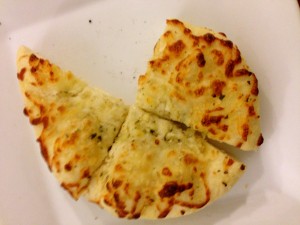Have you ever had cornmeal mush? Kyle hadn’t until I introduced him to it, but now he loves it. It was one of my favorite breakfast foods growing up. We got in a tube at the grocery, cut it into slices, fried it until crispy on each side, then served with a little syrup over top. It may not sound or look the most appetizing but it combines salty and sweet in the perfect way.
The other morning, I was craving it, but I didn’t feel like going to the grocery, and I remember my mom telling me one time that you can make it, so I thought I’d look it up and see if we had the ingredients. And guess what? It is the simplest recipe ever with only 3 ingredients and very little work. Basically if you have cornmeal and little bit of time, you’re set. I looked up a few recipes, and while some had different amounts and different cooking times, they were all pretty similar, so this is what I used:
Corn Meal Mush Recipe
1 cup cornmeal
3 cups water
1 teaspoon salt
Mix all ingredients in a small saucepan. Put it on the stove on medium-high to high to bring it to a boil. Stir while you’re waiting, stopping every now and then to see if bubbles have started to come up. Once it starts boiling (it might start popping a bit so be careful), turn the heat to low and cover and let it cook for about 15 minutes. After this, it should be fairly thick, sticking to your spoon when you dip it in. Then pour the mush into a loaf pan or pyrex dish and put it in the fridge or freezer to cool. I put it in the freezer for a bit because I was anxious to eat it, but then stored it in the fridge afterward. Once it has cooled, it should be fairly solid, and you can slice it and fry it in a pan over medium heat with some oil or butter, until it is crispy or light golden brown on each side. Serve plain or topped with maple syrup or honey.
Cornmeal mush is also similar to polenta. Apparently, according to some random website I just looked up, polenta uses a thicker ground cornmeal while cornmeal mush uses finely ground, which is similar to flour (the same as what is used to make cornbread). Also, polenta may use a broth instead of water as its liquid. However, I think the above recipe could be used for anything that calls for polenta too, using it before cooling if that is the consistency it calls for or after cooling if it calls for something fried up.
I love cornmeal mush. I didn’t get any pictures because Kyle and I ate it too quickly. Give it a try sometime and you might love it too!



